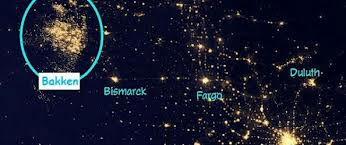New research shows the importance of capturing methane from oil and gas operations – actual readings of US methane emissions are much higher than previous estimates.
This extremely potent greenhouse gas (21-86 times more potent than carbon depending on the time scale) is entering the atmosphere from the US at 1.5 times the rate of earlier estimates, according to research published in The Proceedings of the National Academy of Sciences.
What’s the biggest source? Where there is intense oil and gas production, methane emissions are about five times higher than EPA estimates, and factory farms produce double those estimates.
Rather than estimating methane releases as does the EPA (from industry sources), researchers used actual measurements from 5,000 air samples in 2007-2008, collected from aircraft, communications towers and on the ground across the US.
15 scientists from Lawrence Berkeley Lab, Harvard and National Oceanic and Atmospheric Administration (NOAA) and other major institutions conducted the research.
Earlier this year, NOAA released its own study showing that
the amount of methane released during natural gas extraction is much higher than originally thought. At an oil and gas field in Utah, for example, they found that up to 9% of natural gas leaks into the atmosphere as methane.
Combined with other studies since 2011, the studies call into question whether natural gas can really be considered a "bridge fuel."
Activity from gas flaring is brighter than nearby cities:

Shifting to natural gas makes sense from an environmental perspective only if cumulative methane leaks are under 3.2%, concludes a study by the Environmental Defense Fund and Princeton University.
Where Are the Regulations? Where is Industry Action?
In President Obama’s seminal climate change speech, he specifically said methane emissions must be stopped, but so far the federal government has not moved on regulations. Only Colorado has – last month it became the first state to regulate emissions from oil and gas drilling sites.
Last week, 90 environmental, health and sporting groups asked EPA and Department of Interior to develop federal regulations. Besides flaring during production, they are also concerned about leaks that can occur while natural gas is being transported, and the lack of rules on drilling in the Arctic.
“Climate scientists agree we cannot reach our greenhouse gas emissions reduction goal without curbing methane from the oil and gas industry,” Sarah Uhl, organizer of the Clean Air Task Force’s Stop the Leaks Campaign, told the NY Times. “From the wellhead to customers’ meters, there is leakage all along the system, and it all matters, and it can all be cleaned up cost-effectively.”
In 2011, the EPA estimated that methane releases accounted for 9% of US greenhouse gases, but they clearly are much higher than that.
One of the few positive developments that emerged from the United Nations climate talks in Warsaw last month is a partnership between the oil and gas industry and the Climate and Clean Air Coalition to cut methane emissions. Under the agreement, companies will submit plans on how they will address methane emissions and report annually on progress. It starts next year.
Globally, methane emissions account for roughly 15% of greenhouse gas emissions. In the U.S., oil and gas production is the single largest source, followed by agriculture. Worldwide, it’s reversed – agriculture is the largest source and oil/ gas comes in second.
Without capturing methane, natural gas is dirtier than coal in terms of greenhouse gas emissions.
Here is the study:

Interestingly, the study referenced here never once mentions “fracking” or “hydraulic fracturing,” even though this story leads the reader to believe that’s what the study was focusing on. Catchy headline, though! The fact that the data were collected in 2007-2008 means the study actually has very little relevance to current shale gas development, although subsequent research that the authors are completing will take a look at more recent emissions estimates. A study published earlier this year in PNAS from researchers at the University of Texas and the Environmental Defense Fund actually took the first direct measurements of methane emissions from hydraulic fracturing and shale gas production, and the findings — overall — suggested a low methane leakage rate for shale gas, in line with EPA’s estimates. They did identify some areas of the production phase where more reductions may be necessary, but the direct measurements are arguably a better gauge of emissions from “fracking” than top-down measurements from the air that attempt to pinpoint sources based on computer modeling. That’s not to say this latest research is unhelpful; quite the contrary, and EDF has even acknowledged its utility. But if our goal is understand methane emissions from fracking (as your headline suggests), then it would likely be better to focus on research that specifically looked at fracking, rather than just regional emissions that may or may not be due to oil and gas development. Finally, I would recommend that your readers check out this post from RealClimate.org, which argues that Miller et. al. doesn’t really change much in terms of climate impacts, because atmospheric concentrations of methane (a short-lived greenhouse gas) have remained relatively stable: http://www.realclimate.org/index.php/archives/2013/11/arctic-and-american-methane-in-context/ I hope this provides some helpful additional context. **NOTE: Energy In Depth is a program of the Independent Petroleum Association of America